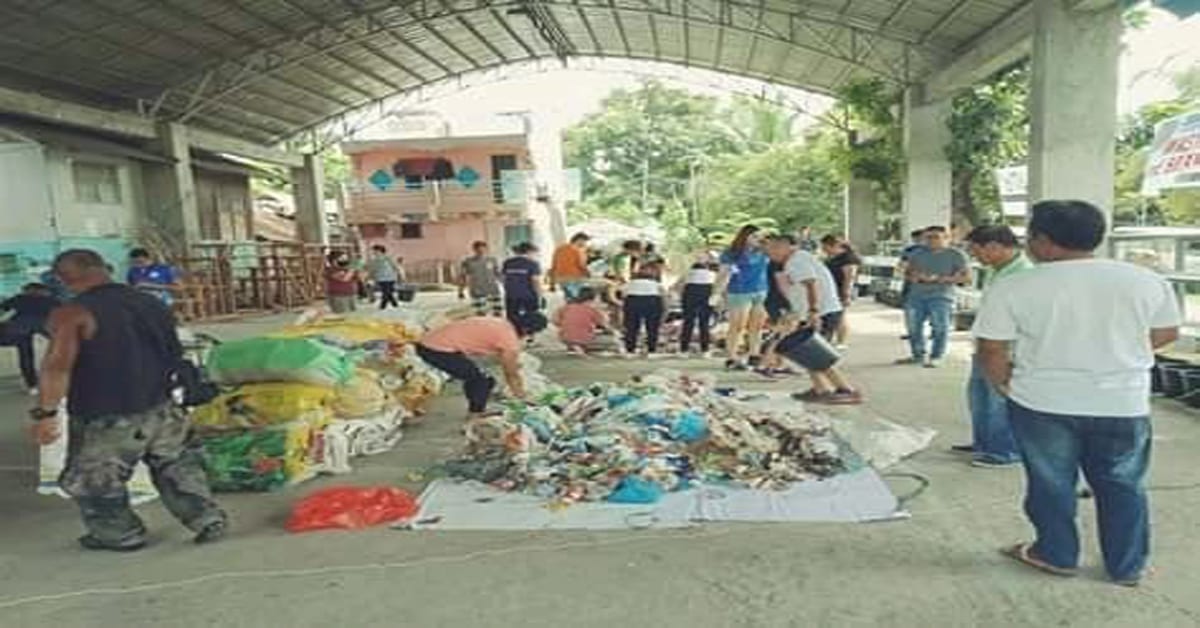A 2015 study showed that over half of the plastic waste in the ocean came from most parts in Asia. In the form of a small plastic packaging called “sachet”, it packs consumer goods for single-use consumption. Over the years, brand audits have collected millions of used sachets of shampoo, instant coffee mix, detergents, and other types of commodities.
Upon beaches, lakes, creeks and rivers is an ocean of colors and brands that have no business being in the vicinity of the water bodies. Most of these sachets can be seen in oceans and other water areas floating or even on shore just waiting to rot. Most brands such as Nescafé, Maggi, Ariel, Palmolive, Colgate, Head & Shoulders, and Mentos come from Western multinational companies such as Nestlé, Procter & Gamble and Unilever.
Brand Audit 2019 Results
The data gathered by the environmental non-profit organization, Break Free From Plastic, identified sachets as a global problem.
Here are some scenes of people who cleaned up beaches during World Cleanup Day 2019.
China:


Ecuador (Brand Audit by PlasticCo.)

Philippines:



Pro-poor but not
Companies promote sachets as pro-poor. They market sachets as “affordable” for everyone, including those less fortunate. They make consumers believe that not only are affordable but can also save money too, but in reality, they don’t! They blatantly mislead unwitting consumers into spending more to get what they need. It’s much better to buy in bulk or large amounts because you often get more of what you paid for at a more cost-efficient way. The company only profits from this while their consumers suffer from both financial and environmental consequences. So the sachet epidemic can primarily be blamed on companies for making these sachets and forcing consumers to deal with the aftermath.
TRUE: Sachets have enabled poor communities to enjoy quality products such as shampoos, toothpastes, lotions, condiments, even ready-to-eat food and drinking water.
FALSE: Companies involved the overall wellbeing of the communities that they heavily marketed their single-use products to.
Christopher Joyce of NPR even went to the Philippines, one of the countries that is most affected by the sachet epidemic. In the Philippines, he had an interview with one local “sari-sari” store owner named Nimfa Manlabe about the stark conditions of the sachet industry in an urban community such as theirs. A sari-sari store is like a tiny storefront wherein someone sells all kinds of products for everyday use like food, soap, powder mix, and all kinds of related products in small little shiny packages like sachets. This is how almost all Filipinos shop, especially the ones living far from major grocery establishments.
The Philippine Crisis with the Sachet
Joyce interviewed Manlabe and she (Manlabe) said that she sells sachets everyday to people. Her neighbors come back to her store every day and buy the small products because that’s all they can afford at the time. Once those sachets are being sold and
used, the people usually throw them just about anywhere.
Manlable said that she sweeps everyday at her store and always find sachets on the ground since people throw them anywhere and since sachets are not recyclable, they usually end up in landfills or burned to cook their meals or to get rid of them.
The waste management problem with sachets goes beyond the Philippines and Asia. Rapidly developing economies such as Africa, South America, and India have seen consumer demand for disposable products grow more than their waste management infrastructures can develop. In fact, many residents suffer from little to no sound waste collection and management systems. This makes sachets the single-use bane of the environment.
Single-use bane
Sachet proliferation has become its own so-called “economy” for many low-income communities. They also endanger the environment on which these poor live in. Single-use plastics like sachets have been dubbed as one of “the greatest environmental challenges facing the world” by former UK Prime Minister Theresa May. This sentiment is echoed by other government officials and think tanks all over the world.
The Philippines’ Environment Secretary Roy Cimatu said that single-use plastic packages degrade the environment. It constitutes most of the plastic pollution which continues to poison our oceans and injure marine life. When not properly disposed, they clog waterways and cause flooding. And there isn’t a waste management system good enough to handle the sachet epidemic.
A sachet risks the whole system
Plastic recycling is not very effective. Worse, it doesn’t even allow for sachets since there is little value for those tiny packets. Because there is no economic incentive to collect used sachets that have been improperly dumped, no one bothers to pick these up. Soon these sachets wash up to clog drains and contribute to flooding.
These sachets have caused numerous problems for areas especially with poor sewage systems like the Philippines. Because of this,, it has only damaged the area but also life for both humans and animals.
Sachets are also the single-use bane of the waste management system. Large PET bottles, cans, or boxes of wastes can easily be reused or segregated for recycling. But most homes shy from sachet segregation – choosing to pile it with other trash – because their materials cannot be physically separated. It’s also worse for the other trash that they go since they dilute the recycling value of these waste materials.
What makes the sachet epidemic more sickening is the blatant greenwashing of the companies who should have been responsible for the wasteful products they sell to the public.
Greenwashing of companies
Companies are challenged every day to change their production process by activists, consumers, and societies at large. However, these manufacturers of single-use plastics, particularly sachets, mislead people on the solution to the sachet epidemic. In fact, most just try to justify their sachet products by their recycling schemes.
Companies mislead consumers thinking their products are affordable or “money-saving” but don’t show them the dark effects of how sachets can be when already disposed.
Some companies, such as Unilever, promote sachet use due to eco-bricks and sachet-made binders for concrete. However, few homeowners use them to build houses. Cement manufacturing is a very energy-intensive activity. So using concrete in applications where no one wants to use the product is unsustainable.
Furthermore, this doesn’t tackle the problem of sachets’ lack of value in the recycling industry. These companies mostly cover up on how they can work on the waste management for sachets but millions of sachets can still be seen all around lying or floating waiting to rot.
Better solutions
We cannot recycle our way out of the sachet epidemic. Rather, we need to go for zero waste alternatives. Above all, we need to make sure that people can buy goods in both affordable and environment-friendly costs.
Replace sachets with big dispensers.
Before plastics, people used to just bring their bottles and food containers to small stores to fill them with their needed products (i.e. oil, shampoo, detergent) in minute quantities. This would be more affordable than sachets since most of the cost of goods come from the plastic sachet itself.
Eco-friendly stores are still in business today, you can search on your local area wherein they sell their own products and all you have to bring is your money and your own container. Avoid plastic packaging as much as possible!
Ban single-use plastics in a country-wide level.
Companies should shift packaging designs to either compostable or recycled plastic. Incentivize initiatives to produce eco-friendly alternatives to products in sachets.
In our own little way, we can help by signing through petitions to ban single-use plastics and support environmental NGOs and charities.
Improve Waste Management systems.
Above all, each individual, government and society should improve the waste management systems in their areas. Conduct clean ups and brand audits to make everyone accountable for the waste pollution.
You can try to help by learning the 5Rs of Zero Waste! By using the 5Rs, you can help the environment by a huge amount!
Conclusion
Replacing sachets in the market is possible, workable even in rural communities. Before sachets, we survived. And we will survive to phase out these wasteful packages.





4 Comments
Leave a Reply4 Pings & Trackbacks
Pingback:The Art of Upcycling : Zero Waste Lifestyle System
Pingback:Climate Change Policies Around the World - Zero Waste Lifestyle System
Pingback:Coca-Cola Recycling: Is this True? : Zero Waste Lifestyle System
Pingback:Shampoo Bars: Handy Tools For Better Hair Care - Zero Waste Lifestyle System